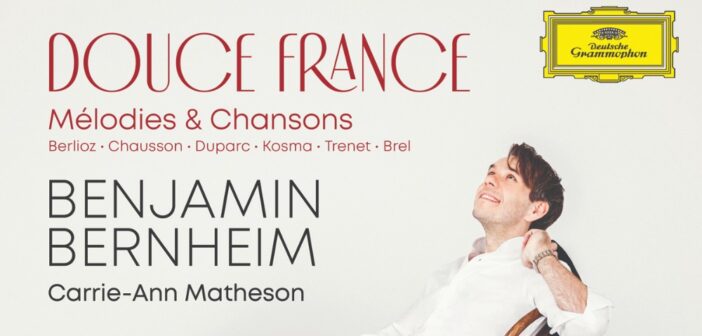
-
Deutsche Grammophon5
Douce France: Mélodies & ChansonsBenjamin Bernheim, tenor; Carrie-Ann Matheson, pianoDeutsche Grammophon, 2024

But as Bernheim notes in the program book, the Berlioz and Chausson sets have historically been the domain of high-voiced female singers, the Duparc often taken by baritones, while tenors have shied away from both. The singer, mostly known for his exquisite performances of the core French operatic repertoire (Roméo, Hoffmann, Werther, Des Grieux), has seized the challenge and the results are an unqualified success.
Bernheim brings an innate sense of authenticity to this repertoire that is at once retro and completely of its time. He is astonishing in his attention to diction: carefully placed final _consonants, clear differentiation between the open-eh and closed-ee vowels, uvular rather than rolled ”r’s”—this all might sound fussy, but Bernheim somehow manages to make it all seem natural.
Conscious not to fall into the trap that ensnares so many opera singers who take on song, the tenor carefully modulates his tone in passages that demand it, while unafraid to incorporate vocal muscle when required. Case in point is the opening of Berlioz’s “Sur les lagunes” sung in the utmost of tender head tones, binding long sentences with smooth legato, but then suddenly opening up with a full throated forte to lament the poet’s bitter fate.
As Bernheim notes, he wouldn’t have embarked on this project without the support of his longtime pianistic partner, P.E.I.-native Matheson, with whom he prepared many roles while she was assistant conductor and vocal coach at Zurich Opera.The Chausson cycle is usually sung with orchestra, although it was premièred by a tenor with the composer at the piano. The orchestration is hardly missed with Matheson at the keyboard since she enlivens its piano-only interlude with all manner of colour and nuance.
The disc ends with three popular chestnuts, two of them popularized by Yves Montand. Bernheim grants “Les feuilles mortes” (“Autumn Leaves”) and “Douce France” the same careful attention he gives to the recording’s high-art repertoire. May he continue to be given the resources to explore this rich tradition.














